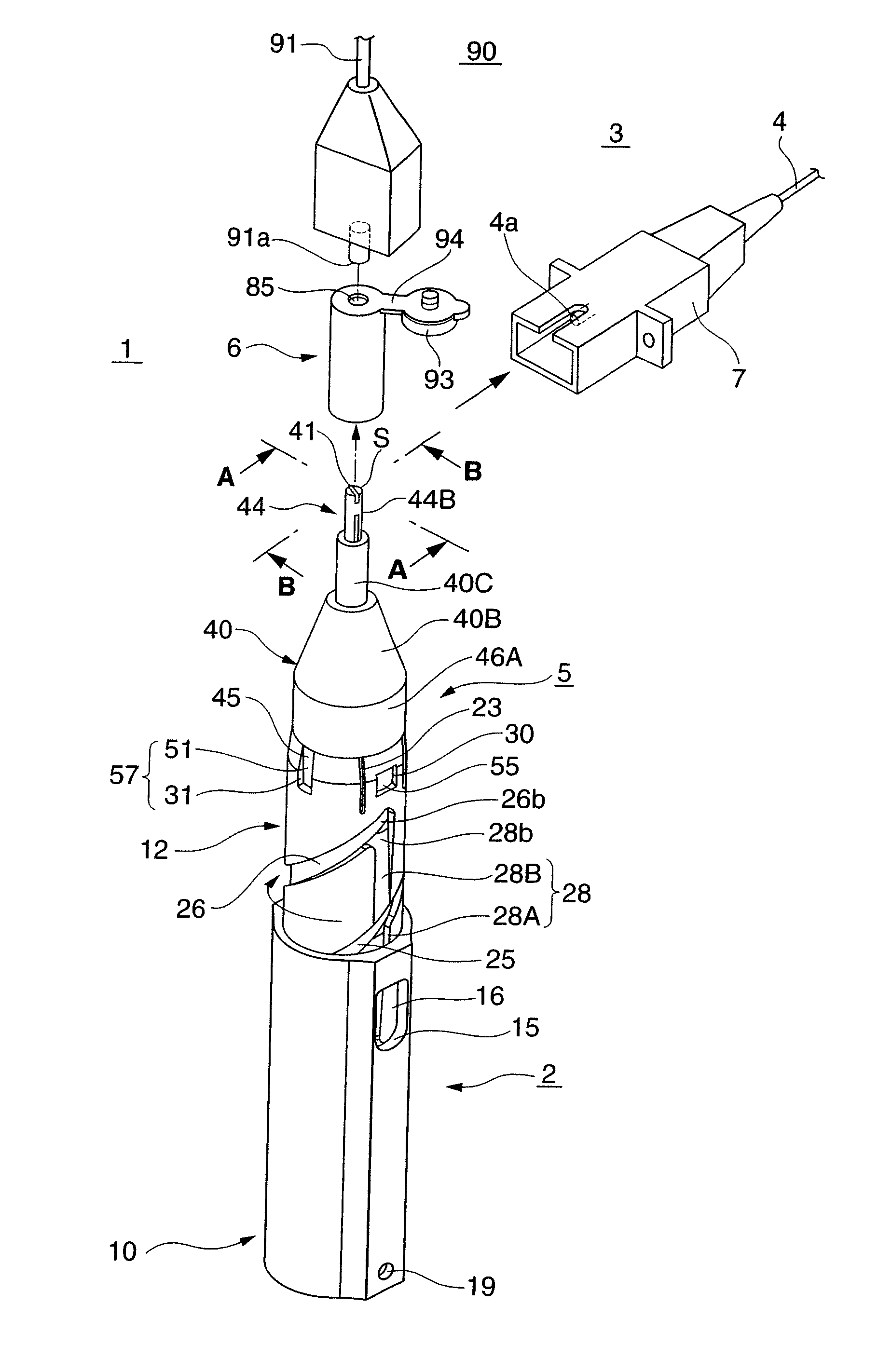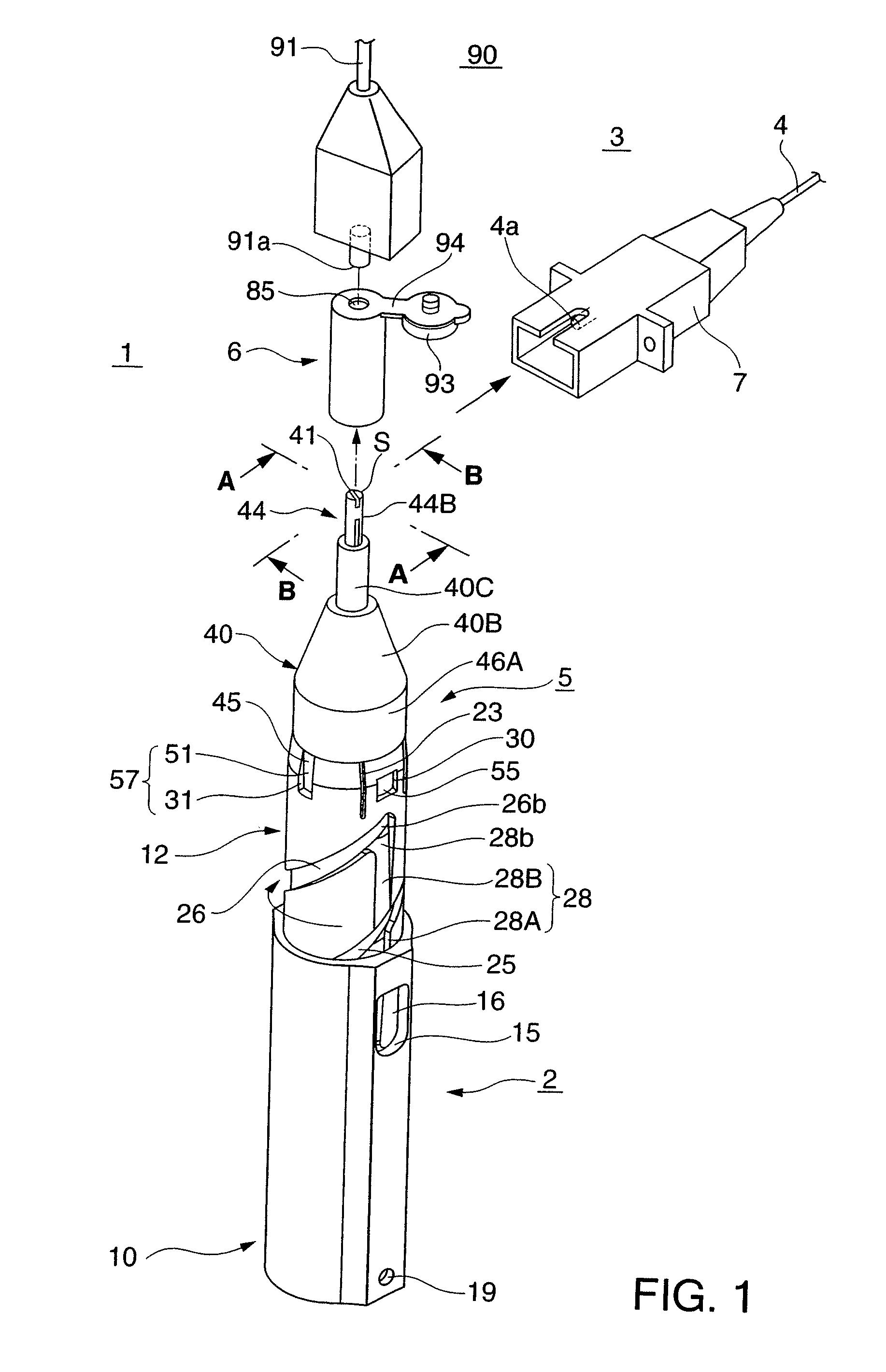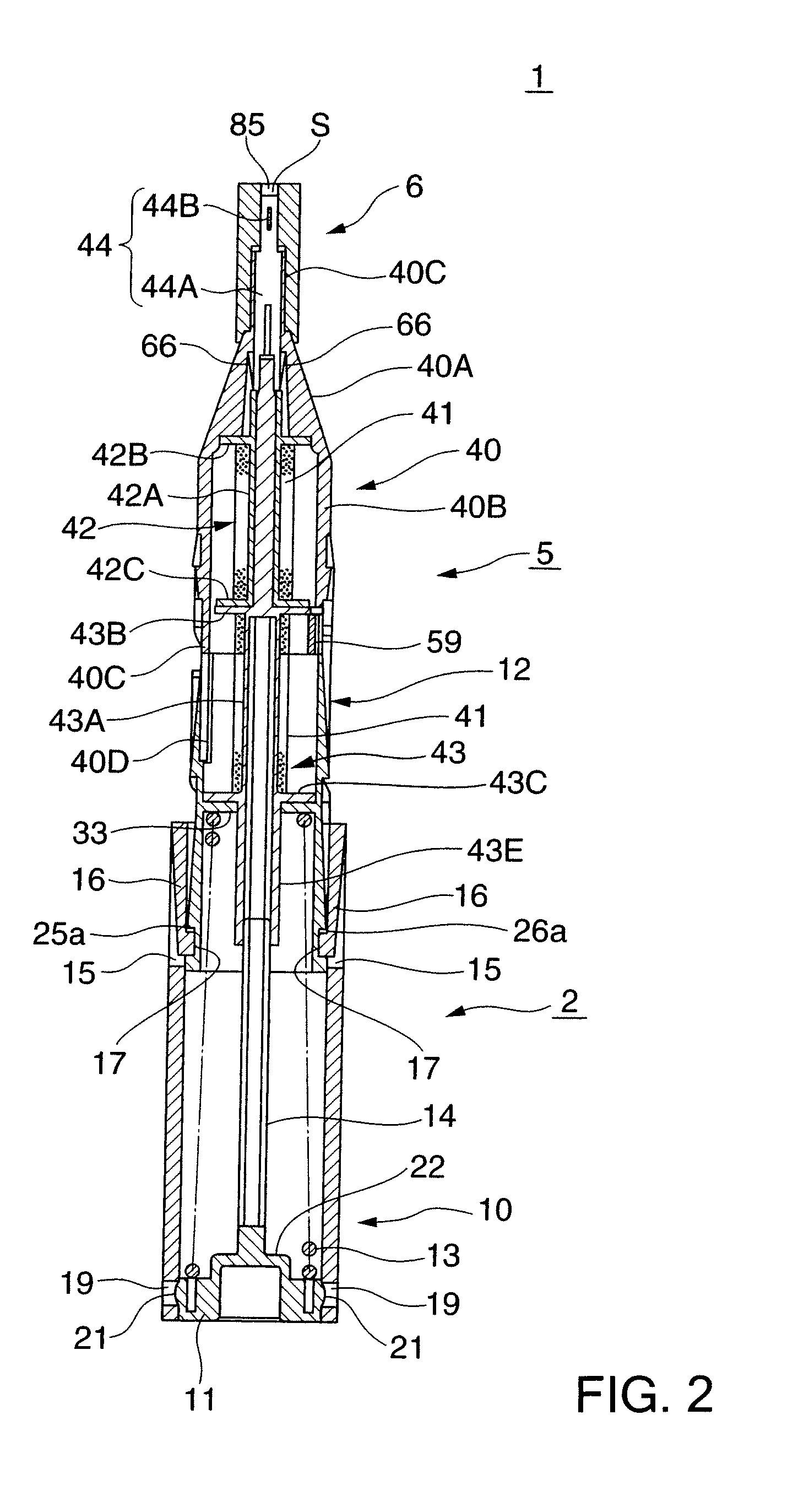Optical connector cleaning tool
- Summary
- Abstract
- Description
- Claims
- Application Information
AI Technical Summary
Benefits of technology
Problems solved by technology
Method used
Image
Examples
second embodiment
[0083]the present invention will be explained below with reference to FIGS. 7 to 24.
[0084]An optical connector cleaning tool 100 according to this embodiment is applied to cleaning of an SC or FC type optical connector 3 (e.g., a connector defined by JIS C 5973 or 5970) in which the outer diameter of a ferrule 4 is 2.5 mm. Big differences from the optical connector cleaning tool 1 disclosed in the first embodiment described above are that the maximum rotational angle of a rotary pod 40 is 180°, and that a cleaner 5 has a guide portion 101 and thread slack preventing mechanism 102. Accordingly, arrangements different from the above-mentioned first embodiment will mainly be explained, the same reference numerals denote almost the same constituent members and portions, and a repetitive explanation will be omitted.
[0085]Referring to FIGS. 7 to 11, the optical connector cleaning tool 100 includes a holder 2, the cleaner 5, a cap 6, the guide portion 101, and the thread slack preventing m...
first embodiment
[0086]Similar to the first embodiment described above, the holder 2 includes a slider 10, a lid 11 that closes the rear-end opening of the slider 10, a body 12 partially accommodated in the slider 10, a slider return spring 13, and a shaft 14.
[0087]Elastic pieces 16 of the slider 10 are thin and long plate-like pieces each having two side edges separated from the slider 10 and two ends supported by it. A guide projection 17 is integrally formed on the center of the back surface of each elastic piece 16.
[0088]An annular groove 104 into which the cap 6 is to be detachably inserted is formed in the back surface of the lid 11.
[0089]The body 12 is integrally formed by a resin material, and spiral grooves 25 and 26 and straight grooves 27 and 28 with which the guide projections 17 of the slider 10 can engage are formed in the outer circumferential surface of the body 12. Since the spiral grooves 25 and 26 are formed within the angular range of 180° in the outer circumferential surface of ...
fourth embodiment
[0123]FIG. 26 is a perspective view of the main parts of a cleaning pin according to the present invention. FIG. 27 is a sectional view of the main parts of the cleaning pin. In this embodiment, a head 44D is integrally formed at the distal end of a thread support portion 44B of a cleaning pin 44. The head 44D has a front surface that forms a flat thread support surface, and is connected to the thread support portion 44B with a neck 44E being formed between them. The neck 44E is elastically deformable and hence can tilt the head 44D in all directions. Also, an outer cylinder 280 made of another member is fitted on the outer circumferential surface of the thread support portion 44B, and an annular gap between the outer cylinder 280 and thread support portion 44B forms a thread passage 281 into which a cleaning thread 41 is to be inserted.
[0124]When using the cleaning pin 44 as described above, the head 44D inclines while ensuring a large contact length between the cleaning thread 41 ...
PUM
 Login to View More
Login to View More Abstract
Description
Claims
Application Information
 Login to View More
Login to View More - R&D
- Intellectual Property
- Life Sciences
- Materials
- Tech Scout
- Unparalleled Data Quality
- Higher Quality Content
- 60% Fewer Hallucinations
Browse by: Latest US Patents, China's latest patents, Technical Efficacy Thesaurus, Application Domain, Technology Topic, Popular Technical Reports.
© 2025 PatSnap. All rights reserved.Legal|Privacy policy|Modern Slavery Act Transparency Statement|Sitemap|About US| Contact US: help@patsnap.com



